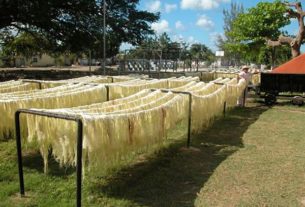So far I haven’t managed to make it to the Baja. Hopefully that will be corrected in the next year or two as my wife and I work our way through the list of places we hope to visit in Mexico. However, while reading Steinbeck’s book, I found myself looking up various guidebooks about the Baja just to find out if the author and I had the same place in mind. His descriptions of the area were just so different from what I expected.
Back in 1940, just before Pearl Harbour, John Steinbeck and his marine biologist friend, Ed Rickets, chartered a fishing boat, the Western Flyer, in Monterey, California, and sailed down the coast around the Baja into the Sea of Cortez. Their six-week mission was to collect specimens of marine life in the area. They jointly wrote a book about the voyage, largely about marine biology, which was published in 1941. A decade later, Steinbeck himself wrote this more personal book.
The result is a mixture of travel writing, journalism, diary-keeping, philosophy, meditation and, yes, there’s a lot of stuff about the marine life of the area. After all, the author was something of an authority in that field.
My reason for going to look up other references was that Steinbeck describes a place that is so barren and deserted that I kept asking myself, Where are the people? Where are the famous resorts? Towns are mentioned, like La Paz, Cabo San Lucas and Puerto Escondido. But they’re passed over quickly. The crew obviously spent little time there. There didn’t seem to be much there anyway. So this isn’t a travel book in that sense. I checked with a friend who knows the Baja well to see if that’s how it must have been in those days. He told me that Cabo, for example, never really came on to the map until 1985, when Californian surfers discovered it. Now, of course, it’s completely transformed.
Steinbeck and his mates spent quite a bit of time on shore, exploring tide pools and searching the shallows for marine specimens. Mostly they were visited by small groups of Indians and, for me, the best parts of this book are where the famous author tries to figure out these mysterious, enigmatic people who don’t quite move to the same life-rhythms as you and me. They come and watch the crew searching the tide pools and, naturally, they’re puzzled about what’s going on. They’re obviously very poor people and Steinbeck is sympathetic to their plight. He’s also aware that his northern/western thinking is meaningless to them.
“How can you say,” asks Steinbeck, “to a people who are preoccupied with getting enough food and enough children that you have to come to pick up useless little animals so that perhaps your world picture will be enlarged? Or, that we wish to fill in certain gaps in our knowledge of the Gulf fauna.”
The question of what’s going on in those heads preoccupies the author as much as finding new samples of tunicates, bristle-chitons and holothurians to fill all those glass specimen jars in the hold. His musings give the book some of its best passages.
“We had been drifting in some kind of dual world,” he writes towards the end of the voyage, “a parallel realistic world; and the preoccupations of the world we came from, which are considered realistic, were to us filled with mental mirage. Modern economics, war drives; party affiliations and lines; hatreds, political, and social and racial, cannot survive in dignity the perspective of distance. We could understand because we could feel, how the Indians of the Gulf, hearing about the great ant-doings of the north, might shake their heads sadly and say,”But it is crazy. It would be nice to have new Ford cars and running water but not at the cost of insanity.” They might even have a point.. At that moment, Hitler’s troops were marching into Denmark and France. Pearl Harbor was only months away.
Later in the voyage, as the Western Flyer sails further north, in the area of Guaymas, there seems to be a great deal more activity on the ocean. The feeling of desolation that prevails in the first 200 pages disappears. The expedition runs into commercial fishing fleets and, to my surprise, huge Japanese dredgers that fish for shrimp by dragging every other living thing out of the ocean – thousands of tons of marine life. I just was never aware the Japanese were doing all that stuff so long ago. As you might imagine, the author has a few things to say on that subject.
When they finally turn for home, Steinbeck writes: “Below in the hold, packed in jars, were thousands of little dead animals. We did not think of them as trophies…but rather as drawings, incomplete and imperfect, of how it had been there. The real picture was in our minds, bright with sun and wet with sea water, and blue or burned, and the whole crusted over with exploring thought. Here was no service to science, no naming of unknown animals, but rather – we simply liked it. We liked it very much. The brown Indians and the gardens of the sea, and the beer and the work, they were all one thing and we were that one thing too.”
An interesting travel adventure but not a book that will enhance your understanding of modern Mexico.

The log from the Sea of Cortez
by John Steinbeck.
Penguin. 1951. 288 pages.
To order from Amazon Books: Paperback

